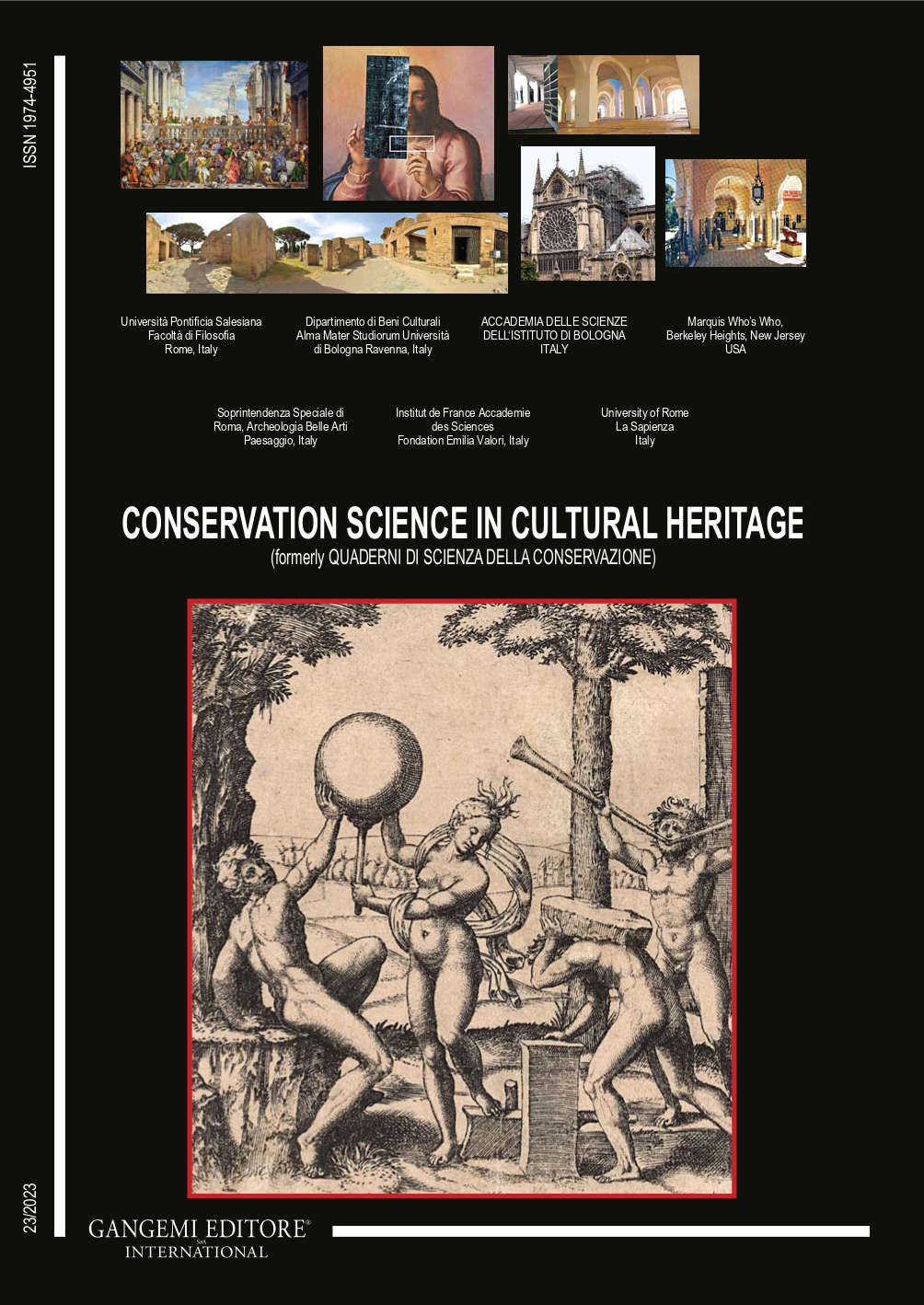Biodeterioration of heritage buildings representative of Costa Rican Caribbean architecture
DOI:
https://doi.org/10.6092/issn.1973-9494/20054Keywords:
Limón City, preservation, multi-criteria evaluation, wood, fungiAbstract
The goal of this work was to characterize potential biological agents responsible for biodeterioration in heritage buildings identified as Costa Rican Caribbean architecture using a multidisciplinary approach. First, an inventory of buildings of Caribbean architecture from Limón City was elaborated. Then, a multi-criteria evaluation system was used to define priority scores to select buildings for sampling and analysis. Selected buildings were sampled for potential biological agents responsible for biodeterioration. Wood samples were taken from sections showing visual damage and fungi were isolated and characterized using Sanger sequencing. A basic profile of Costa Rican Caribbean architecture was established. A preliminary identification of 101 buildings that satisfied the basic profile of characteristics was con-ducted. Subsequently, these buildings were classified into 4 typologies from which 23 buildings belonging to Typologies 1 and 2 were chosen for the collection and registration of data. Applying the multi-criteria evaluation, 6 buildings with final scores higher than 60 points were selected from which the 1st (Casa Misionera Bautista) and 3rd (Antigua Capitanía de Puerto) in the classification were selected for further characterization of biological agents. From the sampling conducted on these two buildings. A total of 36 fungi were isolated. All fungi identified belonged to the fungal group Ascomycota phylum, the most common genera being Trichoderma, Fusarium, and Penicillium. The study shows how multidisciplinary studies can improve the process of decision-making in the preservation of heritage with the use of a ranking obtained for each building in the multi-criteria evaluation and the use of advanced techniques for the identification of biological agents.
Downloads
Published
How to Cite
Issue
Section
License
Copyright (c) 2023 Kenia García-Baltodano, Dawa Méndez-Álvarez, Alejandro Varela-Fonseca, Andrea Porras-Alfaro

This work is licensed under a Creative Commons Attribution 3.0 Unported License.





